The Samsung Galaxy Note5 and Galaxy S6 edge+ Review
by Joshua Ho on October 2, 2015 8:00 AM ESTSystem Performance
While subjective judgments of performance may be possible to make when the delta is significant, when the gap gets increasingly close within the range of perceivable performance differences it becomes important to rely on more precise and accurate methods of measuring the overall performance of the mobile device. For the most part, when we’re discussing system performance the single biggest factor is often the SoC, which makes sense given that an SoC contains the CPU, GPU, video encode and decode blocks, memory bus, and DSPs. There are other aspects of the device that determine the overall perception of performance and things that can have a meaningful effect on performance, but the SoC is often the gating factor.
In order to test this we run mobile devices through our standard suite of benchmarks. In the case of the Galaxy Note5 and Galaxy S6 edge+, there shouldn’t be too many surprises given the commonality in components with the Galaxy S6.
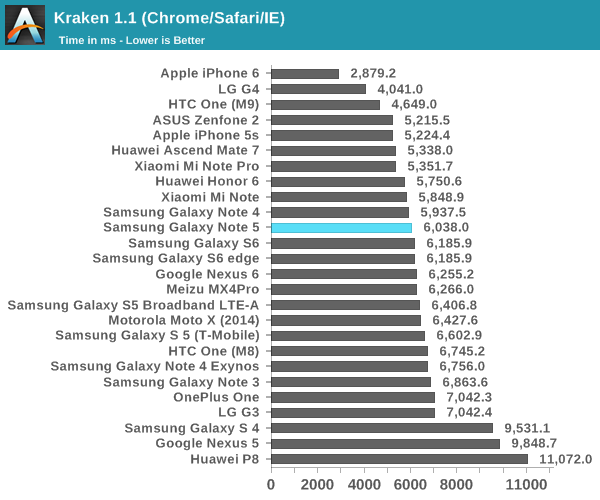
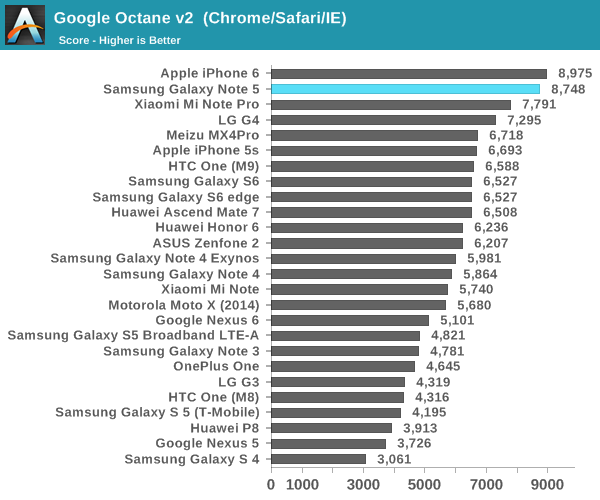
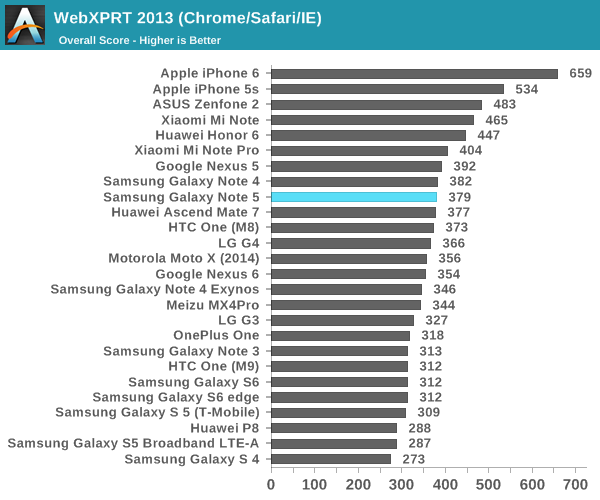
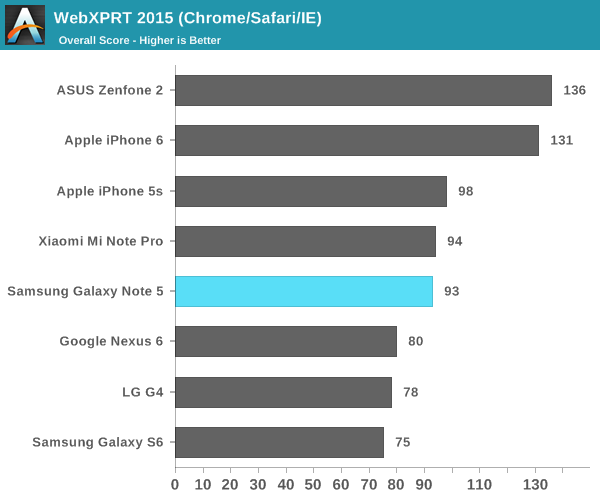

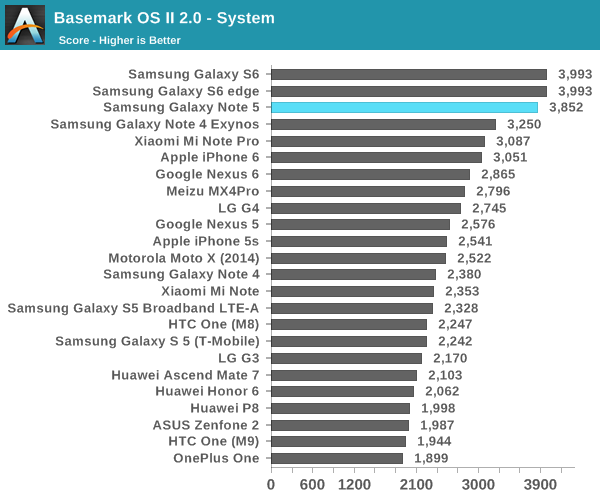
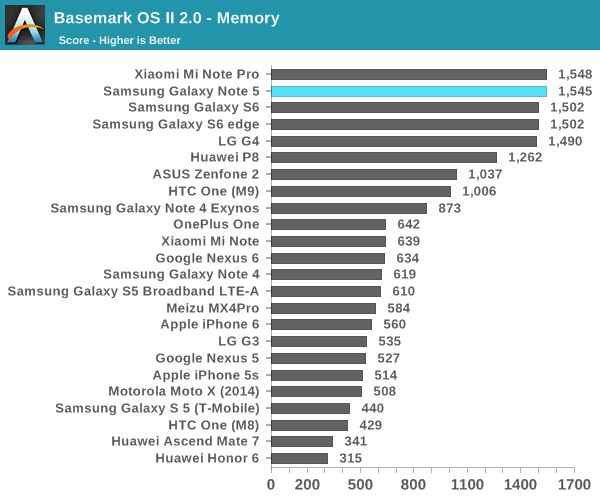
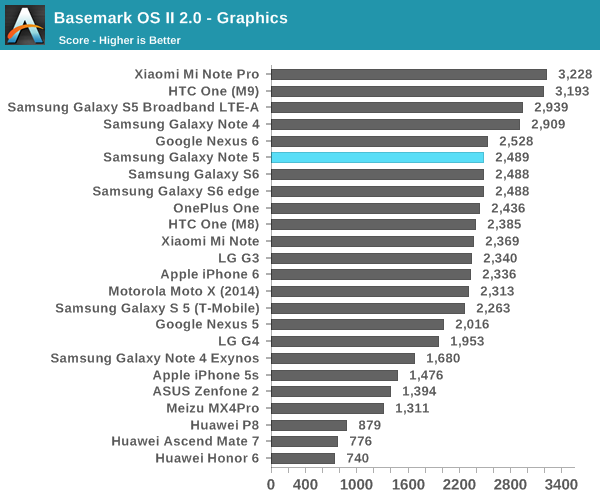

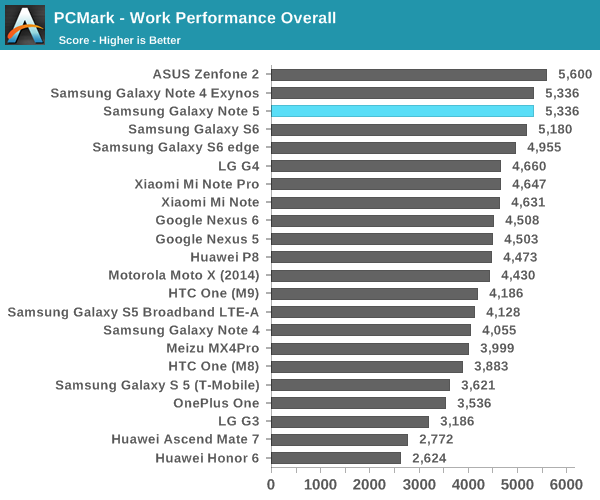

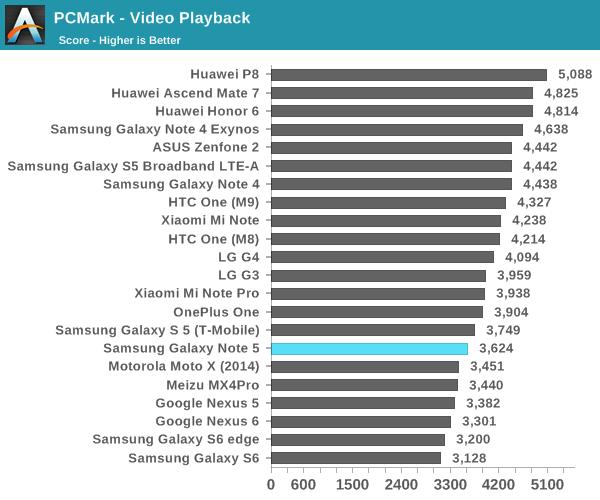
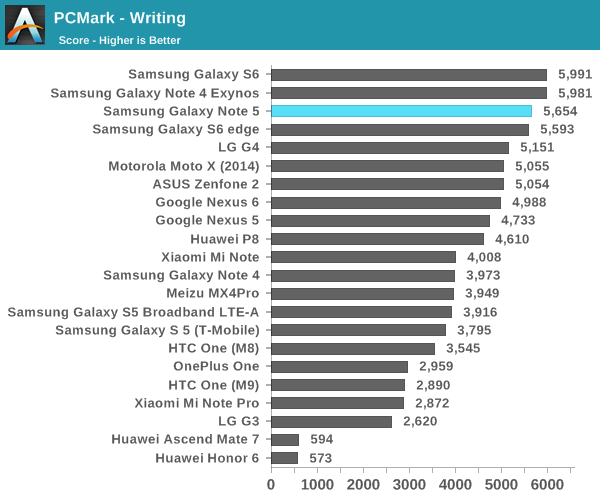
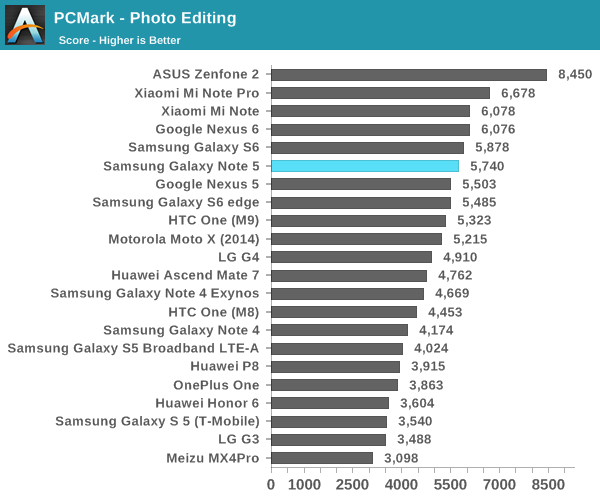
If you guessed that performance in these benchmarks would be similar to the Galaxy S6, you'd be right. Given the shared SoC and general commonality in components performance remains as high as it is with the Galaxy S6. In some cases we see improvements, likely a combination of changes to Chrome and changes to areas like the frequency governor to respond faster to changes in load. It's probably fair to say that the Exynos 7420 will continue to be the best SoC for Android mobile devices in 2015, although it's likely that we'll see significantly increased competition for 2016.










225 Comments
View All Comments
Yanic - Saturday, October 3, 2015 - link
My entire reason for reading this site is because I felt it portrayed an unbiased informative review which is platform agnostic.Kuzi - Saturday, October 3, 2015 - link
I have noticed the same thing for a few years now. Anandtech has been cherry picking benchmarks or omitting when needed to always try to show Apple devices in the best light.In Geekbench multicore exynos 7420 gets 5200, while IPhone 6 gets 2800, and even the iPhone 6S gets only 4400. The story is the same for any other multithreaded tests such as Antutu, 3dmark Physics test etc.
Ryan Smith - Saturday, October 3, 2015 - link
Hi Nerd1,Thanks for the feedback. A couple quick responses to specific items.
Contrast; OLED is infinite contrast since a pure black screen doesn't emit any light. We literally can't even plot it. Which is why we note in the text "Meanwhile the use of OLED means that black levels are perfect and contrast remains solely determined by the lighting of the room and the reflectance of the display"
NAND: There are two factors here. The first is that the NAND has changed relative to the S6. Second, as Josh has commented elsewhere "To add on to this, the main difference is that we're only showing a single IO thread and QD=1 to avoid unnecessarily penalizing eMMC as we found that multiple IO threads is usually an unrealistic workload and that it would negatively affect eMMC performance."
And our benchmarks are based on the metrics we believe are important and are practical to repeatedly and scientifically measure. Truth be told who wins is immaterial, we just want to develop tests that are meaningful while meeting the above goals. And on a related note, this is the same benchmark suite we use in every review, so there is no specific benchmark picking going on.
lilmoe - Sunday, October 4, 2015 - link
You say "scientific", then use browser benchmarks to provide _evidence_ for cross-platform processor superiority... I'm really curious now, Don't you find your statement a bit misleading?Ryan Smith - Sunday, October 4, 2015 - link
It will depend on what we're trying to measure and the what we're trying to investigate. If we want to evaluate the whole phone as a platform, as is the case here, then browser benchmarks are a great tool due to how much use mobile browsers get.Otherwise if we want to measure just SoCs, then we need to be a bit more mindful to account for things like different JS engines. Which is also why we never put too much emphasis on one benchmark, and make sure to run a varied collection.
Though I will add that I'm not sure what this comment is in reference to? The only thing we state with respect to the browser benchmarks on this specific article is "It's probably fair to say that the Exynos 7420 will continue to be the best SoC for Android mobile devices in 2015"
thedons1983 - Sunday, October 18, 2015 - link
Benchmarks prove nothing. And to rely on them so heavily, is just idiotic. Benchmark results, mean absolutely jack sh#t, compared to real life, user experience. If you're not aware of this fact, then why on earth should I listen to a single word that you say?? Benchmarks are for morons, pure and simple.0razor1 - Friday, October 2, 2015 - link
Note 4 aperture size is *incorrect* on page1 :F/2.0 OIS
Should be F/2.2 OIS ?
mercucu1111 - Friday, October 2, 2015 - link
According to GFX 2.7 and 3.0 offscreen. A9 is 40% better than E7420But According to Geekbench
E7420 is 30% better (5600 vs 4400 lol)
So nobody can't say which is better.
ciderrules - Friday, October 2, 2015 - link
Uh, according to Primate Labs the multi score result for the Note5 is 4323. S6 Edge us 4441.Not sure where you're getting 5600 from.
mercucu1111 - Friday, October 2, 2015 - link
It is not overclocked or inflated score.When its 8-core is in full load state. It reachs 1500/5600.